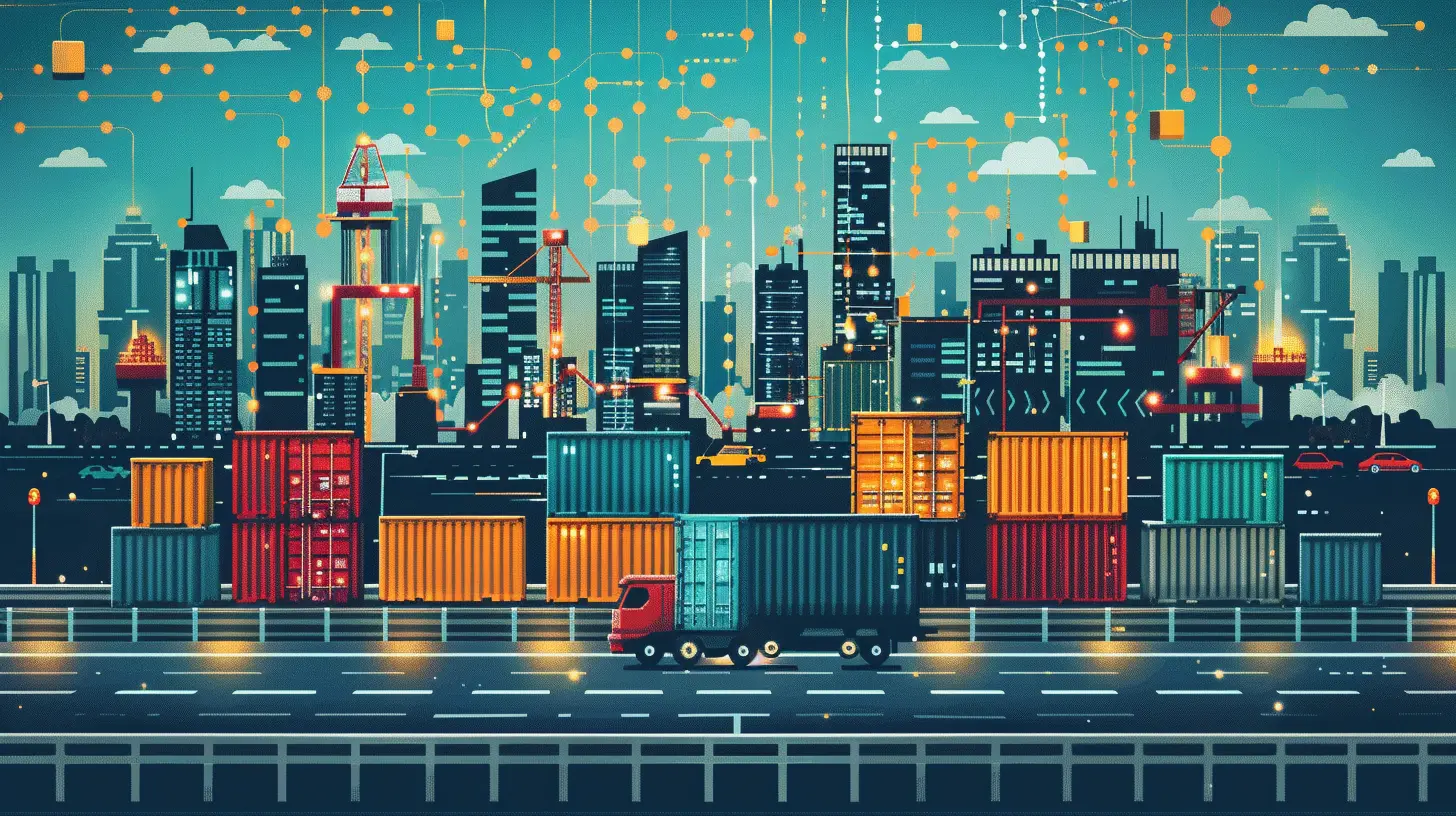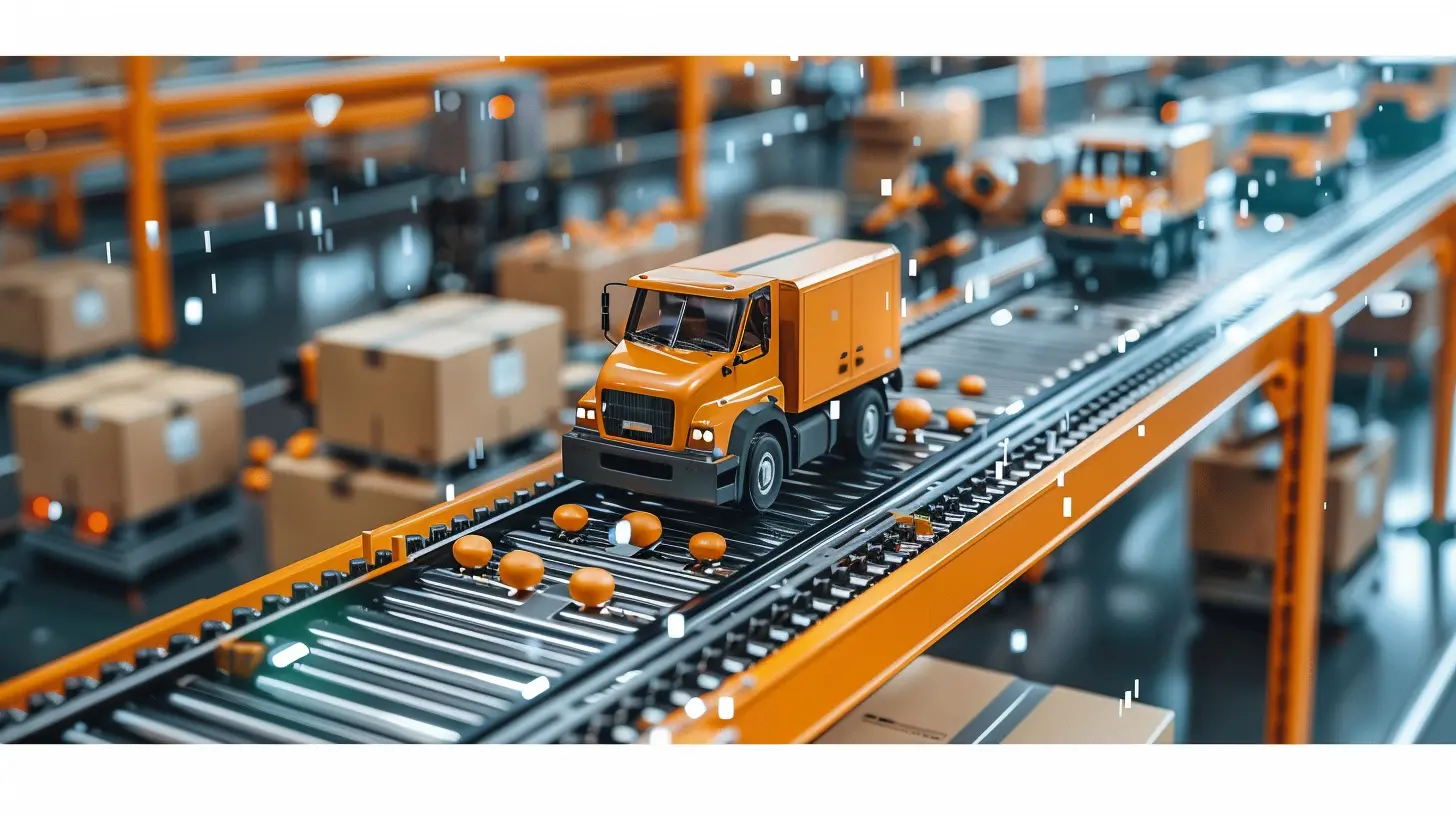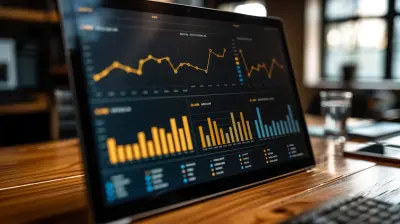Best Tools for Real-Time Supply Chain Monitoring and Analysis
28 July 2025
In today's fast-paced world, where one small hiccup can cause major disruptions, keeping a tight leash on your supply chain isn’t just a good idea—it’s survival. Companies can no longer afford to rely on outdated spreadsheets or reactive decisions. You need real-time insights, instant alerts, and data that talks back. And that’s exactly why real-time supply chain monitoring and analysis tools are such game-changers.
If you're trying to figure out which tools are worth investing in, you're in the right place. Let’s dive into the best tools available today and break down what makes them tick. No jargon. No fluff. Just straight-up information with a human touch.
Why Real-Time Supply Chain Monitoring Is a Must-Have
Before we get into the tools, let’s be clear on why this even matters.Imagine you’re running a bakery. Everything’s going smoothly until you find out—too late—that your flour shipment is delayed. Now you're scrambling, shelves are empty, and your customers are turning to the place down the street.
That’s the kind of chaos real-time supply chain monitoring is made to prevent.
It gives you:
- Immediate alerts when something goes wrong.
- Visibility across your entire supply chain—from raw materials to final delivery.
- Better decision-making power because you're armed with up-to-date info.
- Improved customer satisfaction by avoiding delays and stock-outs.
Pretty powerful stuff, right?
Let’s unpack the tools that help make it all possible.
1. SAP Integrated Business Planning (SAP IBP)
What It Does:
SAP IBP is like the Swiss Army knife of supply chain tools. It connects planning, forecasting, and analytics in real time. Whether you’re predicting demand or adjusting sourcing strategies, SAP IBP keeps everything in harmony.Best For:
Large enterprises with complex, global supply chains.Cool Features:
- Real-time supply chain analytics.- Predictive forecasting using AI and machine learning.
- End-to-end visibility across suppliers, plants, warehouses, and transport.
Why It Rocks:
If you’ve got a supply chain that feels more like a spider web than a straight line, SAP IBP pulls it all together and helps you see the whole picture clearly.
2. Oracle SCM Cloud
What It Does:
Oracle SCM Cloud is like having a central control tower for your entire supply chain. It helps handle logistics, procurement, planning, and more, all while offering real-time analytics.Best For:
Mid-size to large companies that want an integrated solution.Cool Features:
- Internet of Things (IoT) enabled monitoring.- Real-time product tracking and inventory management.
- Predictive analytics for identifying risks before they become problems.
Why It Rocks:
Oracle’s cloud-based platform means you can access your data from anywhere. Stuck in traffic? You can still monitor your shipments and see what’s happening in real time.
3. IBM Sterling Supply Chain Insights
What It Does:
IBM Sterling uses AI to provide insights that help predict, detect, and respond to supply chain disruptions before they happen. Think of it as your supply chain’s sixth sense.Best For:
Businesses that want proactive—not reactive—supply chain management.Cool Features:
- AI-driven recommendations.- Automated alerts and smart suggestions.
- Integration with existing supply chain tools.
Why It Rocks:
This tool doesn’t just show you the data—it tells you what to do about it. That’s like having a data-savvy co-pilot by your side 24/7.4. Kinaxis RapidResponse
What It Does:
Kinaxis is all about agility. It helps you simulate different supply chain scenarios and see outcomes in real time. It’s like running a “what if” machine for your logistics.Best For:
Businesses needing fast decision-making and scenario planning.Cool Features:
- Concurrent planning across departments.- Real-time data synchronization.
- “What-if” analysis to test supply chain responses.
Why It Rocks:
Kinaxis doesn’t just tell you what’s going on—it helps you figure out what’s next. That makes it invaluable when you’re forced to pivot quickly.5. Llamasoft (Now Part of Coupa)
What It Does:
Llamasoft is all about optimization. Using AI and machine learning, it analyzes historical data and predicts the best course of action for your supply chain.Best For:
Companies looking for smarter, faster supply chain decisions.Cool Features:
- Real-time simulations.- Predictive analytics using deep learning.
- Optimization engines for logistics, inventory, and sourcing.
Why It Rocks:
It’s like having a data scientist living inside your supply chain. Llamasoft helps you not just understand your supply chain—but fine-tune it to perfection.6. FourKites
What It Does:
Focused on real-time transportation visibility, FourKites helps track shipments across road, rail, ocean, and air. It’s all about knowing where your stuff is—and when it’ll get to where it’s going.Best For:
Businesses with complex logistics and high delivery demands.Cool Features:
- Real-time GPS shipment tracking.- Predictive ETAs backed by machine learning.
- Custom alerts for delays, route changes, and disruptions.
Why It Rocks:
It’s like Uber for your supply chain—you can track every shipment in real time. No more “where is it?” nightmares.7. ClearMetal (Part of Project44)
What It Does:
ClearMetal puts AI to work to clean up your supply chain data and provide clearer forecasts and insights. It’s perfect if your data is messy or inconsistent.Best For:
Companies struggling with disconnected systems and inconsistent data.Cool Features:
- AI-powered data cleansing.- Predictive demand forecasting.
- Visibility across inventory and transportation.
Why It Rocks:
Garbage in, garbage out, right? ClearMetal ensures your data is clean and reliable—so your decisions are too.8. Infor Nexus
What It Does:
Infor Nexus is a network-based platform that provides real-time visibility from order placement to product arrival. It helps manage everything from procurement to payments.Best For:
Businesses that rely on a wide supplier network and complex shipping.Cool Features:
- Real-time order tracking.- Collaboration tools with suppliers and partners.
- Predictive analytics and risk alerts.
Why It Rocks:
It’s not just software—it’s a network. Infor Nexus connects all your partners into one shared view, so nothing gets lost in translation.9. Shippeo
What It Does:
Shippeo gives you real-time visibility across all transport modes and integrates with hundreds of carriers and logistics providers.Best For:
Companies with heavy logistics needs across multiple regions.Cool Features:
- Real-time transportation tracking.- Predictive delivery windows.
- Integration with ERP and TMS platforms.
Why It Rocks:
Delays happen—but with Shippeo, you see them coming. That means you can act fast and keep your customers informed, minimizing the fallout.10. Zebra Technologies
What It Does:
Zebra offers a variety of hardware and software solutions that help track inventory and assets in real time. Think scanners, RFID, and mobile computers—basically, the tech backbone of real-time visibility.Best For:
Retailers, warehouses, and manufacturers who need eyes on every asset.Cool Features:
- Real-time asset location tracking.- RFID tagging solutions.
- Integration with WMS and ERP systems.
Why It Rocks:
Zebra turns physical inventory into digital data. You don’t lose track of anything—because you’re literally watching it move in real time.Choosing the Right Tool for You
Now that we’ve covered the major players, you might be wondering:> “Which one should I use?”
Here's the thing—it depends on your business size, industry, and the challenges you’re trying to solve. Ask yourself:
- Am I struggling more with logistics or forecasting?
- Do I need better data accuracy or better predictions?
- How many suppliers and locations do I manage?
Once you pinpoint what hurts the most, you can match the right tool to the pain point.
What to Look for in a Real-Time Monitoring Tool
Let’s wrap up with a quick checklist to keep in your back pocket. Whatever tool you choose, make sure it offers:1. Data integration – It should connect easily with your existing tools.
2. Real-time visibility – If there’s a delay, you should know now, not tomorrow.
3. User-friendly dashboards – Data is only useful if it’s easy to read.
4. Smart alerts and notifications – A red flag system for when things go wrong.
5. Scalability – Your business will grow. Your tools should grow with you.
You don’t need bells and whistles. You need clarity, control, and confidence.
Final Thoughts
Let’s face it—supply chains are getting messier by the day. From pandemics to port delays to shifting customer demands, there’s always a curveball coming. But guess what? You don’t have to fly blind anymore.Choosing the right real-time monitoring and analysis tools means you can move from reactive to proactive. From chaos to control. From “I think” to “I know.”
And that’s a powerful shift.
So whether you’re a global giant or a growing startup, the tools are out there. All you need to do is pick the one that fits your flow—and start making smarter, faster, stress-free decisions.
all images in this post were generated using AI tools
Category:
Supply Chain ManagementAuthor:

Caden Robinson
Discussion
rate this article
1 comments
Cruz McKeehan
Great insights! Real-time supply chain monitoring is crucial for efficiency. The tools highlighted here are essential for businesses looking to enhance transparency and responsiveness in their operations. Well done!
August 10, 2025 at 4:27 AM

Caden Robinson
Thank you for your feedback! I'm glad you found the insights valuable. Real-time monitoring truly makes a significant difference in supply chain efficiency.


